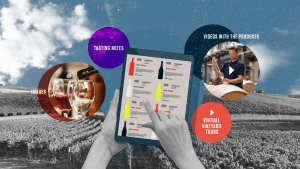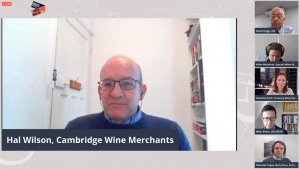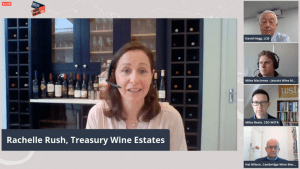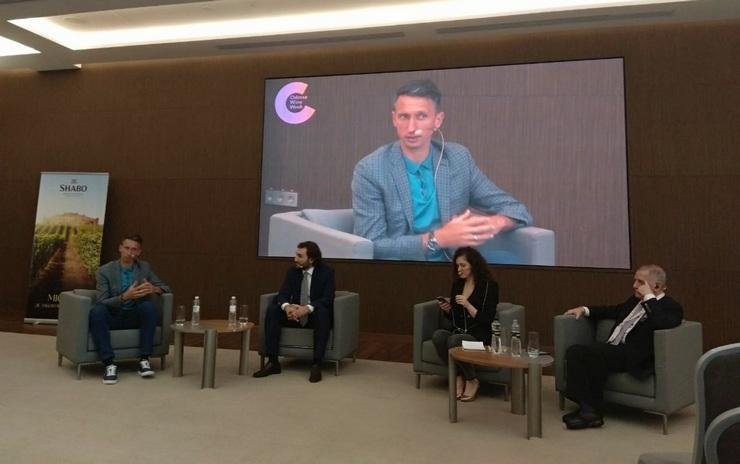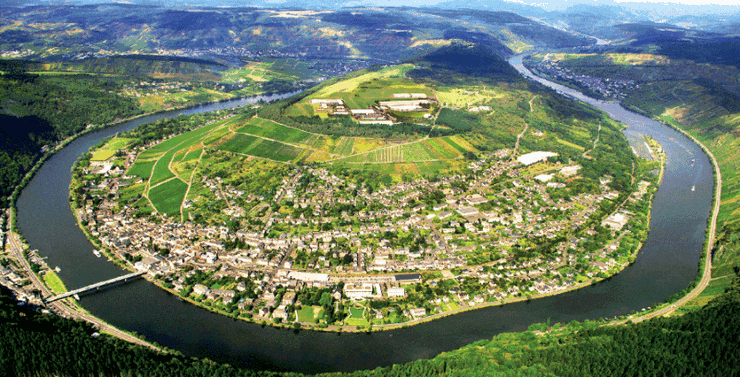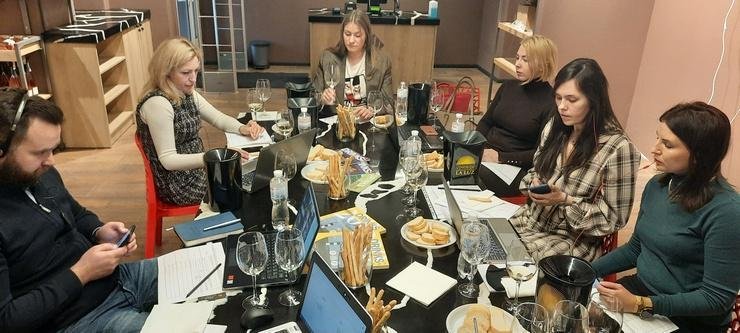Like many other wonderful drinks, the mankind was lucky enough to get Pétillant Naturel wines (French for “naturally sparkling”) from the French. Today, the Pét-Nat category roams Europe, attracting more and more winemakers and gaining an army of lovers. And in its homeland, this traditionally freedom-loving example of sparkling wines acquires even regulations and registration. Suffice it to recall, for instance, the experience of one of Languedoc appellations: Limoux Methode Ancestrale AOC Wine.
However, in their essence, Pét-Nats are like hippies: nature, freedom and individuality are their three pillars. Therefore, different varieties are used to create them: Mauzac and Gewürztraminer, Chenin Blanc and Hárslevelű, Lambrusco and Nero d’Avolo. Some winemakers resort to fermentation in barrels, others in steel, cement tanks or in amphorae. Perfectionists control the temperature regime and carry out remuage and degorge (incidentally, these processes are in high favor with numerous Moldavian winemakers). “Freethinkers” let the temperature “run its course” and advocate for cloudy. Residual sugars range from 12 to 20 g per liter. And Pét-Nats come out both dry and semi-dry. Some Pét-Nats are corked like champagne, other Pét-Nats are born covered with the beer bottle cap. Prices are also fluctuating: some winemakers are ready to sell a bottle for literally 7 euros, whereas others position their natural sparkling wine almost like champagne and sell for 50.
As early as in the last year, Drinks+ emphasized that Pét-Nats had become a global trend. Despite the fact that at the time the idea of making Pét-Nats sounded bizarre, at the present stage, we are already able to observe a total infatuation. That means that one can already start monitoring the particularities of production of Pét-Nats in Ukraine.
Pét and Nat of Alexander Kovach
It seems that Alexander Kovach, a winemaker from Transcarpathia and founder of the family craft winery “Kovach Wines”, approached the production of Pét-Nats as a chess game – thoughtfully and carefully. As a matter of principle, it should be pointed out that Kovach was one of the first winemakers in Ukraine who was thinking about promises offered by this trendy category.

At least, Alexander assures that this was a planned project: “One is unable to make a Pét-Nat accidentally. In order to make it, one should necessarily order a champagne bottle which keeps a high pressure; to carry out controlled fermentation, and to implement some preparatory measures”. Good preparation gave the result: the very first release was a success. “At the end of fermentation, I separate some wine from the entire wine volume and pour it into bottles. If you have controlled fermentation, then in 10-14 days, depending on initial sugar content in the wort, you can bottle. I determine a residual sugar content in the laboratory, when there is 3% left, we pour the wine into the bottles”, – Alexander Kovach comments on the process. – There were some mistakes, but this year I made adjustments. After all, on the one hand, Pét-Nats are easy to produce, on the other – there may be surprises and not always pleasant ones. Unlike traditional technology, where some problems can be rectified at the stage of quiet fermentation, you can’t change anything in the bottle. Therefore, everything should be correct from the very start, and most importantly, clean.”

During previous years, Kovach’s winery experimented with Muscat Holodryhy, Chardonnay and Sauvignon Blanc for whites; Cabernet Sauvignon was chosen for rosé wine; Cabernet Sauvignon and Odessa Black were blended for a red sparkling wine. Production volumes include about 200 bottles of each type. You can try them in the winery’s tasting rooms in Uzhhorod and Lviv, as well as right at the winery. “A year or two ago, only a few winemakers started carefully applying this technology. Now, according to social media reports, many [winemakers] have begun their experiments with Pét-Nats. You will be surprised shortly!” – Alexander Kovach predicts.
Home Wine From Boris: staying on top
Victoria and Boris Pecker, owners of the Nikolaev winery Home Wine From Boris located on top of a multistoried-building, admit that the idea to make Pét-Nats was autochthonous. “After removing wort from lees, there were about 100 liters of red wine and as much of white was left; it was undesirable to pour [these liters] into a 500-liter barrel for post-fermentation. They were bottled into one-and-a-half-liter plastic bottles”, – the owners told.

Sharing their impressions of the new experience, the winemakers say that the conclusions are ambiguous: “The process is time-consuming, you have to tinker with each bottle on an individual basis. The original taste is similar to the wort at the stage of silent fermentation…”. At “Home Wine From Boris”, Pét-Nats were produced from the varieties: Odessa Black, Merlot and Johanniter. “We do not make blends, as it is technically difficult. The first fermentation stage takes about 14 days, including five to seven days of maceration for red. Thereupon, bottling comes – after removal from crude lees at the stage of silent fermentation” – the winemakers say.
Boris says that the further procedure of preparing Pét-Nats on their rooftop terrace took place in several stages. The first was bottling, when was a challenge to regulate a degree of carbonization. “Often, at a touch, the cork tears off and a bottle turns into a wild and bloody genie”, – the winemaker says. – Cleaning can take hours and even days. After bottling, we put Pét-Nats off for two months.

The second stage is racking wine off settled lees. “The main thing is to carefully reduce the pressure when opening the bottle. Thereupon, a ready-made wine, well saturated with CO2, is put off until summer”, – Boris shares his experience.
The third stage – just before use – the sparkling wine is carefully poured into a decanter or a clean bottle. “The effervescence usually continues for a day, even in a decanter. Having passed all stages, we are awarded with an ecological wine without any preservatives and sulfites”, – the master emphasizes.
Boris and Victoria believe that creating a Pét-Nat is a rather labor-consuming process and that is why few Ukrainian winemakers go for such experiments. The list of disadvantages also includes: “Low yield of a final product. The taste is significantly inferior to the same wine, which has passed the correct aging, sulfitation, and clarification. In addition, the usual syphon will turn any wine into Pét-Nat without much effort”. Pét-Nat releases at the winery owned by Boris and Victoria are about 200 1.5-liter bottles. To cut a long story short, they produce Pét-Nats for themselves and their friends. They also do not see any economic expediency in such production: given the man-hours spent, it should be comparable to any other high-quality sparkling wine, which makes Pét-Nat uncompetitive. “The drink is for moxie moments and breaking the monotony. Similarly to blue wine or white wine from red grapes”, – the winemakers summarize.
Bohdan’s winery shoots the fish in the barrel
Another Ukrainian craft producer, Bohdan Pavliy, the founder of Bohdan’s winery near Kamenets-Podilsky, began experimenting with Pét-Nats last year. “I did not make a classic Pét-Nat in bottles – I made it in a tank. I presented that drink at the Food and Wine Festival in Kyiv and at the Wine and Cheese Festival in Lviv. Those were two 30-liter barrels: white and rosé. The residual sugar content was 6%”, – the winemaker said.

Bohdan’s winery vineyards consist of resilient complex hybrids of European and American selection. A blend of early white varieties was used to produce Pét-Nats.

“To all appearances, the reason why Pét-Nats are produced by not so many winemakers, is that it is not very popular in Ukraine”, – Bohdan Pavliy said. “Besides, it’s not as easy to make it as it may seem”.
He who has climbed a mountain, knows best
However, Anton Liapin, Head of the winery “Honcharna Hora” (the “Potter’s Mountain”) in Kharkov Region is of the opposite opinion. He believes that garage winemaking initially involves an author’s approach to making wines, experimenting with technologies and verification methods, so it would be wrong to bypass a hype product like Pét-Nat. “As far as I know, there are no strict regulations for production of this drink, which leaves an ample room for creativity. And méthode ancestrale is very suitable for garage winemaking, because, unlike the traditional method and Charmat method, it does not require complex equipment, a large number of additional operations, it is inexpensive and technically simple”, – Anton Liapin said.

Chardonnay, Pinot Blanc, Riesling, Citron Maharacha, and Johanniter were used in the production of their experimental Pét-Nats this year at the winery “Honcharna Hora”. Those were mainly experimental blends with different proportions. “The state is not yet issuing licenses for sales, so we produce in small batches, for treating ourselves and our friends” – the winemaker says.

Anton emphasizes that in the process of Pét-Nats production, the key point is to correctly determine the bottling time so that the sugar in the fermenting wort is about 15–25 g/l. And the winemaker says that he is not impressed by a too cloudy Pét-Nat. “It is important to have a good raw material, with high acidity, minimal contact with the grape skin, and well-clarified juice before fermentation. Moreover, almost all lees from the bottle can be removed if you do not transport the wine and open it properly”, – he shares his experience.

The winemaker is confident that the Ukrainian Pét-Nats will definitely exist. “Many people are already experimenting with this category, and there will be even more. It’s just that the results of experiments are not yet reaching consumers, but it is a matter of time. Many people make this drink just for themselves. In my understanding, Pét-Nat is not very suitable for transportation, it is better to drink it where it is produced” – the master says.
SliVino Village are already bottling …
When sharing with Drinks+ his thoughts about Pét-Nats, Georgiy Molchanov, co-owner of SliVino Village, assistant to Mikhail Molchanov, Chief Winemaker, and Chairman of the Association of Craft Winemakers of the Black Sea Region, emphasized their advantage: “Pét-Nats are trendy. That year, acting solely for the sake of an experiment, we made Pét-Nats for the first time – only 50 bottles. We worked with such varieties as Odessa Black, Muscat Odessa, and Cabernet (rosé). We bottle Pét-Nats according to the table, which means subject to the effervescence that we intend to achieve, and at such specific density bottling is also taking place; in this case [for Pét-Nats], we bottle to attain 2-3 bars of pressure”, – he says.

The Molchanov are cautious: the experimental natural sparkling wines were made by them only for tastings at the winery. “As far as I know, the term Pét-Nat itself is not officially used in Ukraine, so there may be problems with their sales”, – Georgiy Molchanov explains.
Real Don and natural tulburel
Alexander Shapovalov, owner of Don Alejandro Winery on the west bank of Khadzhibeysky Estuary in the village of Kholodnaya Balka in Odessa Region, was lucky to have been born into a family of winemakers. So, he literally was soaking Pét-Nats with his mother’s milk. “My grandfather called this drink “sparkler”, and his neighbor Ionel, who was a Moldavian – “turburel”.

Since those were mainly red wine grapes that were grown in Bessarabian villages, “sparkler” was red. It was simple: not yet fully fermented grape juice was poured into the old bottles which once contained “Sovetskoye Shampanskoye”; thereupon, the bottles were capped, using formerly used plastic stoppers, which were screwed with earlier used wire hood (muselet) on top for reliability. The bottles placed into a metal box formerly used for milk bottles were then sent to the cellar’s far corner, because some bottles were likely to burst from pressure and possible microcracks. The ladies would call their grandfathers’ drink in a sweet family way: “shampusik”; they loved it for its stinging bubbles and cheerful temperament, and would often ask to open it next summer. However, my grandfather would argue that “it was a stock for Christmas, and not much of the special product was made (no more than 15-20 bottles a year…”, – the winemaker recalls.

Almost 40 years have passed since then, and now Alexander Shapovalov is himself experimenting with primary fermentation in a bottle. “To date, I have managed to empirically develop a technology for production of this wonderful sparkling drink, and because we have no Ukrainian name for that drink, our so-called “wine regulators” claim that it is a “fake”)); well, let it be called in the French style: Pét-Nat. Today, my collection of home-made Pét-Nats has more than 30 specimens. The most vintage one is Rkatsiteli, 2013. I also like Pét-Nats made from Pinot Noir, Odessa Black, Centaur, Pervenets Maharacha, Aligote, and Muscat Holodryhy” – Alexander says.

At Don Alejandro Winery, degorging is avoided to preserve authenticity of the product. “We do not sell our Pét-Nats, we enjoy them ourselves, we use them to give a treat for our friends and guests during tastings held at our winery during a warm season” – the master says.
Narovylo: by way of trial only
Valery Narovylo, creator and chief winemaker of Narovylo winery, admits that he decided to experiment with “village sparkling wine” after the seminars held in February 2020 by Alina Tenetko and Masha Skorchenko (creators of Just Ferment It wine educational project). “We tried Pét-Nats along with sparkling classic [wines]”, – the winemaker emphasizes.

As a result, he realized that his heart was in Pét-Nats from Chardonnay and Pinot Meunier, although in addition to these varieties, Valery Narovylo also used Riesling and Sauvignon Blanc. “The moment of bottling is determined by the amount of residual sugar during wort fermentation”.

I like the drink itself, but the wine lees and turbidity are a little confusing. This season, I will try to make it more clarified”, – Valery plans. In total, the winemaker produces about 60 bottles of Pét-Nats. He says, that the drink produced is not for sale, it is sufficient only for the family and friends.
Father’s wine VB: Pét-Nat by powerhouse
Father’s wine VB, the winemakers’ family from the town of Husiatyn, Ternopil Region, was introduced to the promising Pét-Nat category by the consultants Masha Skorchenko and Alina Tenetko (creators of Just Ferment It wine educational project). “We made the first release together, and it was a planned project. We realized that the time of the first fermentation depended on a variety, the wort’s initial density and temperature of fermentation. We determine the bottling time by density (we monitor the decline dynamics every 30 minutes)”, – they told us at the winery.

The first experience was successful; the wine was made from Jupiter variety according to the schemes prescribed by Alina and Masha. It was rosé Pét-Nat that was the most admired by those who were invited to tastings organized by the winemakers. “But the release was tiny: 100 bottles, so stocks ran out quickly. We believe that Pét-Nat is ideal for lovers of everything, which is natural; such people accept both lees and extravagant aromas” – the masters say.

Pét-Nats blends are not made at the winery. Jupiter, Muscat Ottonel, and Johanniter are used on a “solo basis”, and Cabernet Sauvignon was also used that year. In 2020, a total of 1,200 Pét-Nat bottles of four types were produced and are being offered at tastings. To all appearances, at the current stage, this winery has become the country’s leader and powerhouse in terms of the range and volumes of Pét-Nats produced. According to the owners of Father’s wine VB, the explosion of demand for Pét-Nats is hindered only by one thing: inability to sell them officially.
Biologist: reasonable follow-up
In our opinion, Igor Petrenko, the founder and chief winemaker of Biologist craft winery (Kyiv Region), is the first person in the country, who is ready to solve this specific problem. He said that the decision to make Pét-Nats had been born as an alternative to the country’s sparkling wine. He started producing ancestrale wines because “he wanted to do something new, to do an experiment”. So Pét-Nat from Biologist is an experimental project. Igor emphasizes that the Pét-Nats are not for sale. Nevertheless, the winery decided to “continue to develop this vector”. The year before last, the winery produced single-variety Pét-Nats from such varieties as Aligote, Chardonnay, Pinot Meunier, and Cabernet. Last year, it made 100% pure Pinot Noir and blends using Traminer, Sauvignon Blanc and Pinot Noir.

Production particularities: the first fermentation takes approximately ten days. Density and sugar content are measured; thereupon, the date of completion of the drink’s dry fermentation in a bottle is calculated. By the date thus calculated, bottling of the fermenting wort is to start. Thereupon, the drink is sent for maturing for at least nine months. Some specimens mature in a bottle for more than a year.
“We must admit that our first attempts were not always successful, which is primarily due to excessive alcohol content (about 13%). That mistake was rectified this year” – the winemaker shares his experience.

According to Igor Petrenko, Pét-Nat from Biologist is unfiltered and has fine lees, which is not a proof of damage or defect. The Pét-Nats produced at the winery are clarified and have an attractive aroma of “home sparkling wine”. “In order to avoid repulsive aromas, it is also necessary to control removal of sulfur-like off-odors and reduction in wines. This is not a simple process and requires a deep dive into fermentation and aging” – he says.
In 2019, the winery produced about 300 bottles of Pét-Nats and approximately 600 in 2020.

Igor Petrenko emphasizes that the process of Pét-Nats production is very time-consuming, and today’s fashion for Pét-Nats and further interest in them should be developed, using the winery’s own resources. In addition, Pét-Nats are not yet regulated by the existing National Standards of Ukraine and require separate technical documentation. It may appear interesting for the Ukrainian wine community to get to know that Biologist has already begun the process of preparing the necessary documentation for applying for the Pét-Nats production license. In the near future, the winery is going to get a license to sell Pét-Nats and actively commence their promotion.
Drinks+ warning: lightness is good for your health
Well, first to go! Although the world’s interest in natural wines (it should be pointed out that despite a number of reservations and compromises, the Ukrainian Pét-Nats are excellent exponents of this line of wine business) evoked twenty years ago, the today’s commotion in the ranks of microwine producers challenges the entire industry. Even if one finds this conclusion incorrect, and the comparison with commercial counterparts inappropriate, the Ukrainian Pét-Nats are not just an echo of the world trend. This is a clear sign for all winemakers, not only for the Ukrainian ones. Hopefully, most of our winemakers already understand: despite the fact that microwinemakers are a “microelement” of the business today (forgive this trite saying of mine!), and their wines are often far from perfect, their very presence and clear focus on naturalness and quality are gradually changing the market. Most importantly, the microwinemakers’ experiments are changing the consumer.
Before long, the wine lovers will appreciate the beauty of this game: the prospects and attractiveness of natural wines. They will begin to understand a delicate gradation of their aromas, distinguish wild yeast from artificial additives, forgive the unpredictability of these wines and appreciate them for their natural liveliness. Finally, they will realize that a craft wine and a cheap wine from commercial giants, are as far from each other as the cherries recently plucked from a tree are from Montpensier Pastilles.
It goes without saying that there have always been serious winemaking and great wines (thank goodness!). However, if we broach such issue as popular passion, the winners will include primarily those winemakers who will manage to combine the quality stability attained by the commercial production, with the vector of natural products: lightness of Pét-Nats, drinkability of wines in Glou-Glou style, and freshness of brut nature. To cut a long story short: Bottoms up!
Drinks+ emphasized that Pét-Nats had become a global trend, so one can already start monitoring the particularities of production of Pét-Nats in Ukraine.
